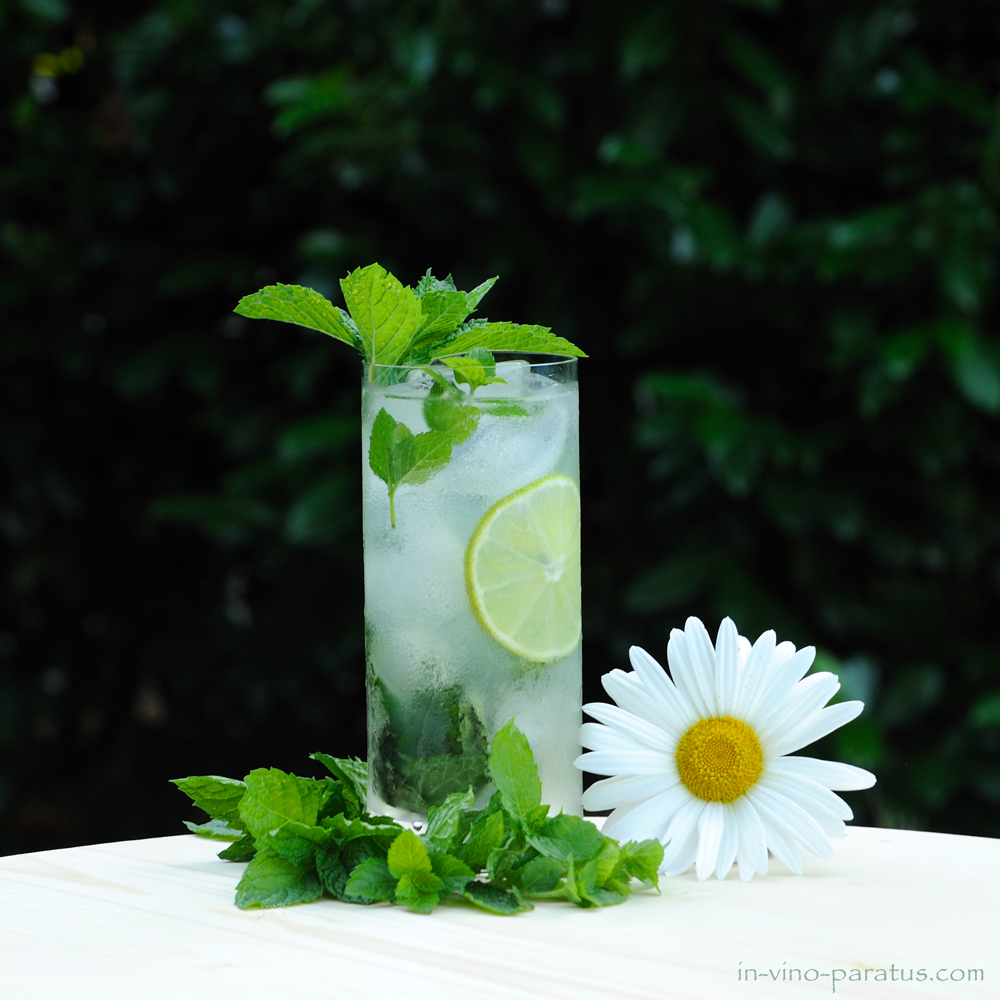
It would be tempting to place this article after the one about the Daiquiri and accompany it with Hemingway’s iconic phrase, “My mojito in La Bodeguita, my daiquiri in El Floridita,” bearing the great author’s signature. The “Hemingway’s” handwriting of this phrase can be found framed on the wall of La Bodeguita bar in Havana, where the paper draws tourist’s money for many years. While Hemingway often spent time with a glass of daiquiri at El Floridita, he was not a mojito drinker at La Bodeguita, although he did visit the bar. Mojitos were not Hemingway’s style – it is too weak and too sweet. The note on the wall is actually a fake, mocked by the bar’s owner. So, “My mojito in La Bodeguita, My daiquiri in El Floridita” can serve as an example for an article about successful promotional cheating. Pity.
However, the absence of interest from the famous writer and drinker does not diminish the mojito and doesn’t make the cocktail less popular.
To the wide world, the mojito came from Cuba, which is not unusual for a cocktail with rum as its main alcoholic ingredient. However, the origins of the mojito are shrouded in mystery, as it doesn’t have a single inventor but rather evolved gradually from local traditions.
According to the most romantic version, the predecessor of the mojito was created by Francis Drake, the famous sailor and privateer of the British Crown. One day, in his conquest of Spanish gold, he arrived to Havana. He did not bring gold to Cuba, but introduced “El Draque,” a drink made from rum (or, according to another version, brandy), lime juice, and mint. Since rum appeared in the Caribbean a century after Drake, it was likely brandy or Drake got somewhere Brazilian rum that was also possible.
Some believe that Drake and his crew developed, drank, and shared the recipe with the local people; others say that Drake sold the islanders the cargo of mint he’s got somewhere.
The more prosaic version of the mojito’s origin suggests that Cubans naturally developed the habit of adding a variety of ingredients to mask the taste of cheap and low quality rum. Cheap rum was plentiful, and limes grew abundantly on the island.
Thus, the historical truth behind the mojito’s origin remains elusive.
At the time of Prohibition, when Cuban bars were brimming with thirsty Americans, the mojito was already very popular. The taste of rum no longer needed to be masked, as Bacardi had already improved rum quality. However, the concept of the mojito remained appealing.
There are five components in a classic mojito: white rum, sugar, lime juice, mint, and soda.
The mojito belongs to the category of long drinks—cocktails with a relatively large volume (more than 120 ml, typically between 160-400 ml) and a relatively low alcohol content. More specifically, it is a highball, a type of long drink that consists of only one alcoholic component combined with a non-alcoholic mix. It is served on ice in a Collins glass.
What is crucial for a mojito (and not just a mojito) is the use of fresh ingredients. Nowadays, many places might splash some weird pre-mix into your glass, add rum, and call it a mojito. Do not believe them. If a bar doesn’t have fresh mint, I won’t order a mojito there, I’d go away and never come back. While I also don’t recommend replacing freshly squeezed lime juice with commercial alternatives, at least this substitution doesn’t ruin the taste as much as a “ready mojito mix” does.
Here’s the IBA recipe:
Ingredients:
-40 ml white rum
-30 ml fresh lime juice
-20 ml simple syrup (or two teaspoons of sugar; I personally prefer simple syrup)
-6 mint springs
-soda
Process:
1.Muddle the mint in the glass with lime juice and simple syrup. You can use a dedicated muddler (a wooden pestle), a long spoon, or simply rub the mint gently between your palms before adding it to the other ingredients. The idea is to release the oils gently, not pulverize the mint.
2.Fill the glass with ice cubes.
3.Pour in the rum and top it off with soda water.
4.Garnish your creation with mint and a slice of lime. A straw serves as the final touch.
This cocktail is the perfect companion for a sweltering summer day, a testament to the simple elegance of a classic.
Visit my online store for a unique poster featuring this cocktail, along with many other beautiful cocktails and other wine-related subjects.
It’s the perfect way to add a touch of sophistication to your kitchen or bar. Click here to shop now!